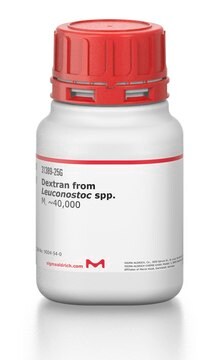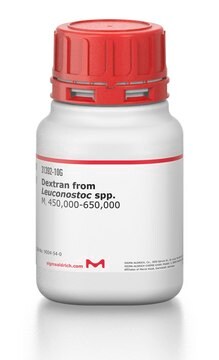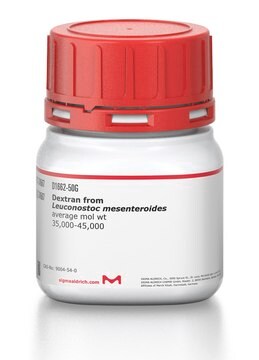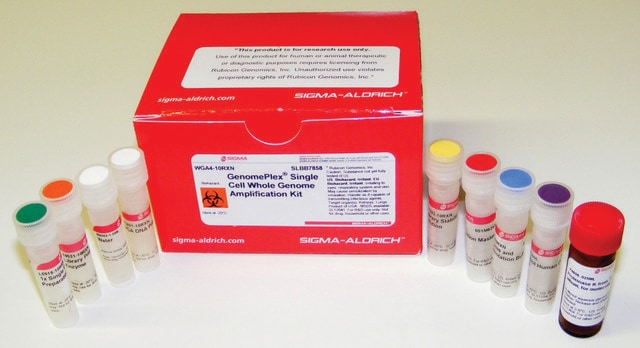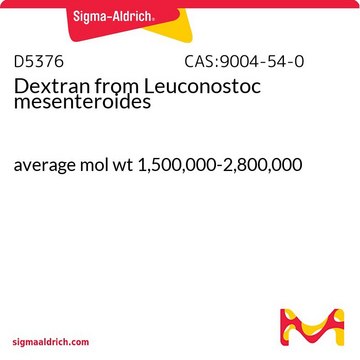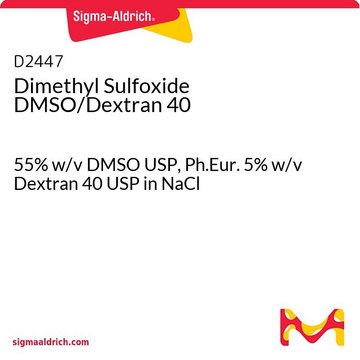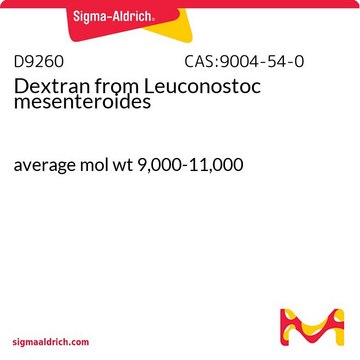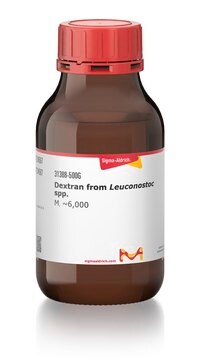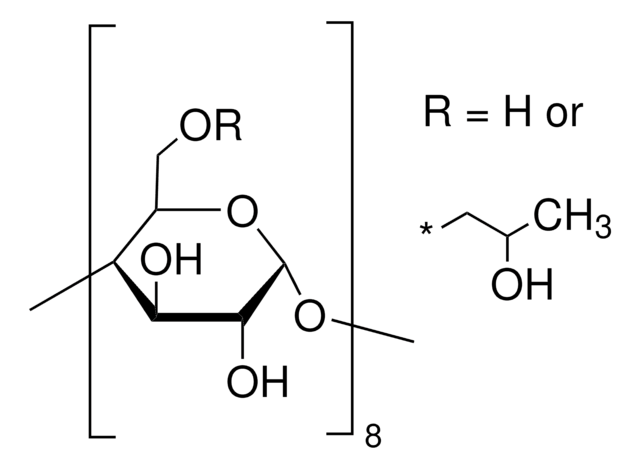D8802
Dextran solution from Leuconostoc mesenteroides
20 % (w/w) (Autoclaved)
Synonyme(s) :
repeating α-linked D-glucopyranosyl units, synthesized from sucrose by Leuconostoc mesenteroides
About This Item
Produits recommandés
Forme
liquid
Niveau de qualité
Poids mol.
average mol wt ~500,000
Concentration
20 % (w/w) (Autoclaved)
Technique(s)
titration: suitable
Couleur
colorless
Densité
1.00-1.20 g/mL
Application(s)
hematology
histology
Température de stockage
2-8°C
InChI
1S/C18H32O16/c19-1-5(21)9(23)10(24)6(22)3-31-17-16(30)14(28)12(26)8(34-17)4-32-18-15(29)13(27)11(25)7(2-20)33-18/h1,5-18,20-30H,2-4H2
Clé InChI
FZWBNHMXJMCXLU-UHFFFAOYSA-N
Description générale
Application
Code de la classe de stockage
10 - Combustible liquids
Classe de danger pour l'eau (WGK)
WGK 2
Point d'éclair (°F)
Not applicable
Point d'éclair (°C)
Not applicable
Faites votre choix parmi les versions les plus récentes :
Déjà en possession de ce produit ?
Retrouvez la documentation relative aux produits que vous avez récemment achetés dans la Bibliothèque de documents.
Les clients ont également consulté
Notre équipe de scientifiques dispose d'une expérience dans tous les secteurs de la recherche, notamment en sciences de la vie, science des matériaux, synthèse chimique, chromatographie, analyse et dans de nombreux autres domaines..
Contacter notre Service technique